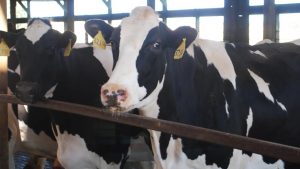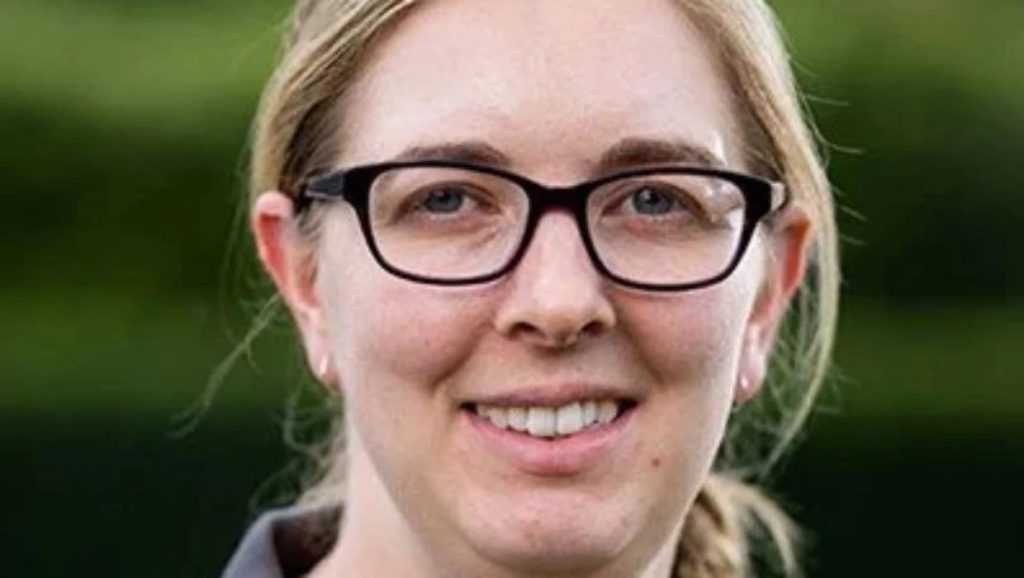A passion for science and love of working with farmers is what motivates senior scientist at DairyNZ Dr Roshean Woods to establish a low nitrogen future for dairy farmers.


A passion for science and love of working with farmers is what motivates senior scientist at DairyNZ Dr Roshean Woods to establish a low nitrogen future for dairy farmers.
Woods is working within a team of world-leading researchers on the ‘Low N Systems’ research programme to help farmers reduce nitrogen losses into the environment and improve freshwater and ecosystem health.
A milk based indicator tool is being developed through the programme which will allow farmers to track surplus N in their herds diet. It is designed to help farmers manage their N loss risk by indicating when the herd’s urinary N losses to the environment might be increased.
Her role has involved working with 20 Canterbury farms – 38 dairy farms across the region and the Waikato are involved in the DairyNZ-led programme.
“It’s a collaborative effort,” she says.
The challenge with nitrogen leaching in New Zealand soils is mitigating it through urine patches, Woods says.
“In a lot of international systems, [cows] might be in housed barns, and that effluent can be captured and spread more evenly across the land for plants to take up. Whereas our cows are mostly outside and the nitrogen from urine is often concentrated in patches so plants can’t always take it all up.”
 DairyNZ’s milk based indicator tool will identify how much surplus nitrogen is in a herds diet.
DairyNZ’s milk based indicator tool will identify how much surplus nitrogen is in a herds diet.Woods says nitrogen is one of life’s key nutrients, so it’s hard to avoid in a cow’s diet.
“Nitrogen is an essential component of proteins and it’s required for cellular processes in plants and animals. It’s really a significant nutrient.”
Although it can’t be removed from cows’ diets, it can be reduced. The milk based indicator tool aims to tackle this by identifying increased urinary N losses, allowing farmers to mitigate it with advised practices.
Throughout four farm visits over 12 months beginning in November 2021, DairyNZ collected pasture and supplement samples and information on pasture and fertiliser management.
Fonterra has helped in providing DairyNZ with collected milk data and further information from partner farms. The data will assist in developing the milk based indicator alongside Fonterra.
 Fonterra collects around 16 billion litres of milk from around 10,000 farming families every year, exporting 95% of that globally.
Fonterra collects around 16 billion litres of milk from around 10,000 farming families every year, exporting 95% of that globally.Woods says “the beauty of the tool” is that farmers will be able to get an estimate of their herd’s dietary surplus N on a regular basis. Without the tool, she says dairy farmers manage their N loss using annual data and modelling, rather than receiving feedback in real time.
“A lot of the mitigations farmers are implementing are more at that strategic level…They might use annual data to reflect on how the season went and make plans for the next season whereas this is a tool that is more real time, giving options for responding during the season.”
With research being undertaken in Waikato and Canterbury, different mitigation strategies will work for different farms.
“It’s different as to what mitigation might work best for [farmers], their situation and what they’re trying to achieve, there isn’t really a one size fits all,” she says.
Mitigations could include altering the timing and level of nitrogen input through fertilisers or utilising pasture species that are more effective in taking up nitrogen to reduce the risk of leaching from the soil.
Woods says feedback from farmers on the research and their willingness to be involved has been all positive.
She says farmer involvement plays a large role in the strength of her work by collaborating scientific knowledge with practical experience.
 DairyNZ is working with 38 different farms across Canterbury and Waikato to carry out the research and gain knowledge from farmers.
DairyNZ is working with 38 different farms across Canterbury and Waikato to carry out the research and gain knowledge from farmers.Woods’ involvement with DairyNZ began well before her employment. Studying three science subjects, physics, biology and chemistry, in her final year of high school proved to be an advantage DairyNZ representatives visited the school.
The reps spoke about the opportunities in the dairy sector for scientists, visiting all three of Woods’ classes at different times.
“Hearing the same message over and over kind of starts to sink in. They piqued my interest in that I was made aware of other opportunities in the agriculture and dairy sector, that support farmers to do all the awesome work that they do.”
She visualised a career both on-farm and in a lab, finding that environmental science at Lincoln University would fit that. A scholarship with DairyNZ then furthered her agricultural science knowledge, leading to an internship with DairyNZ and AgResearch after completing her bachelors degree and honours.
The internship gave her the opportunity to complete her PhD, focusing on N leaching from different pasture species. From the start of her career with DairyNZ to her current role with the organisation, she has come full-circle.
You can now read the most important #news on #eDairyNews #Whatsapp channels!!!
🇺🇸 eDairy News INGLÊS: https://whatsapp.com/channel/0029VaKsjzGDTkJyIN6hcP1K
Legal notice about Intellectual Property in digital contents. All information contained in these pages that is NOT owned by eDairy News and is NOT considered “public domain” by legal regulations, are registered trademarks of their respective owners and recognized by our company as such. The publication on the eDairy News website is made for the purpose of gathering information, respecting the rules contained in the Berne Convention for the Protection of Literary and Artistic Works; in Law 11.723 and other applicable rules. Any claim arising from the information contained in the eDairy News website shall be subject to the jurisdiction of the Ordinary Courts of the First Judicial District of the Province of Córdoba, Argentina, with seat in the City of Córdoba, excluding any other jurisdiction, including the Federal.
1.
2.
3.
4.
5.
eDairy News Spanish
eDairy News PORTUGUESE
